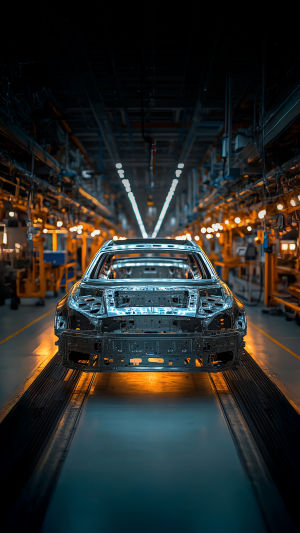Every time you start your car, you're not just igniting an engine—you're activating a global web of decisions, contracts, and connections that began years before the vehicle ever reached the dealership.
Most drivers have no idea that the smooth feel of their leather seats or the instant responsiveness of their brakes are made possible by a supply chain that stretches across continents.
Today, let's go behind the scenes and unravel one of the most complex systems in manufacturing: the global automotive supply chain.
<h3>The Invisible Backbone: Tiered Suppliers</h3>
You may assume car companies make most of their parts. In reality, original equipment manufacturers (OEMs) rely heavily on thousands of Tier 1, Tier 2, and Tier 3 suppliers.
• <b>Tier 1 suppliers</b> deliver complete systems like braking units or infotainment modules directly to automakers.
• <b>Tier 2 suppliers</b> make components for Tier 1s—like semiconductors or metal fasteners.
• <b>Tier 3 suppliers</b> provide raw materials such as lithium for EV batteries or resin for dashboard plastics.
A delay at a Tier 3 supplier—say, a mining company—can ripple upward, causing entire factories to halt. That's why modern car manufacturers often keep extensive risk-monitoring systems in place just to track the health of their supplier networks.
<h3>Material Sourcing: A Fragile Balancing Act</h3>
Whether it's steel for the frame or cobalt for the battery, sourcing materials isn't just about finding the lowest bidder. Automakers weigh a mix of cost, sustainability, geopolitical stability, and transportation infrastructure when choosing where to buy materials.
Take the example of wiring harnesses. These components are inexpensive but essential. When certain regions experienced sudden disruptions—such as extreme weather or labor unrest—production stalled because automakers couldn't quickly switch to other sources. Unlike electronics, wiring is labor-intensive and difficult to automate, making flexibility limited.
In short, one small component from a distant corner of the world can halt the production of a $40,000 vehicle.
<h3>Labor Force: The Human Link That Can't Be Automated</h3>
Robots may dominate the final assembly line, but the automotive supply chain is still deeply dependent on human labor.
• Wiring and electrical components require hand assembly in many cases.
• Quality inspection for critical safety features often involves human judgment.
• Logistics coordination, especially in just-in-time systems, needs experienced managers who can solve problems in real-time.
And here's where things get even more unpredictable: labor shortages, union strikes, and shifts in local labor policies can instantly create bottlenecks that no machine can solve. For instance, during a major strike at a North American parts supplier in recent years, several automakers had to idle their plants not because of technical failures, but due to lack of parts that cost less than $5 each.
<h3>Logistics: When Just-in-Time Becomes Just-Too-Late</h3>
Automakers used to keep warehouses full of parts. But to reduce costs and waste, many now follow a just-in-time (JIT) strategy—parts arrive right before they're needed.
It sounds efficient, and it is—until it's not. One misstep in shipping, such as a blocked canal or delayed cargo plane, and the whole production schedule collapses. Experts now call this the "bullwhip effect," where small shifts in demand or delivery timing upstream cause amplified disruptions downstream.
To counter this, automakers are increasingly investing in digital twins of their supply chains. These are real-time, virtual models that help predict where delays might occur before they become visible in the physical world.
<h3>What This Means for Car Buyers</h3>
You might not care where your car's steering rack came from, but the supply chain absolutely affects what you see on the lot—and what you pay.
• Limited configurations: When certain chips or materials are in short supply, manufacturers may produce fewer trim levels or limit color options.
• Longer wait times: High-demand models might have waitlists of several months.
• Price fluctuations: Material and freight cost increases get passed on to buyers.
In short, the complex dance of the supply chain doesn't just affect automakers—it shapes your ownership experience.
<h3>So, What Can Be Done?</h3>
Some manufacturers are taking bold steps:
• Re-shoring production of critical components to be closer to assembly plants.
• Dual sourcing strategies—relying on more than one supplier per part.
• Vertical integration, where automakers buy or invest in key suppliers to stabilize their flow.
But these come with their own trade-offs in cost, efficiency, and flexibility.
Ever wondered why your preferred model was suddenly out of stock, or why car prices fluctuate so dramatically year to year? Chances are, the answer lies not in the showroom, but in the container ships, procurement offices, and supplier contracts behind the scenes.
Next time you see a shiny new car in a commercial, think about the hundreds of hands, parts, and countries that made it possible. The supply chain may be invisible—but it's steering the future of driving.





